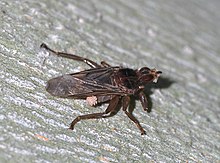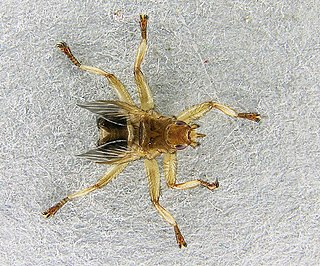
Hippoboscidae, the louse flies or keds, are obligate parasites of mammals and birds. In this family, the winged species can fly at least reasonably well, though others with vestigial or no wings are flightless and highly apomorphic. As usual in their superfamily Hippoboscoidea, most of the larval development takes place within the mother's body, and pupation occurs almost immediately.
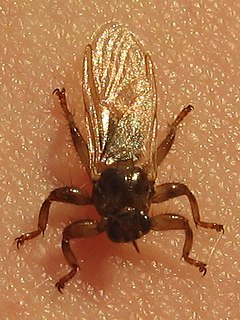
Lipoptena is a genus of Hippoboscidae, known as louse flies or keds.
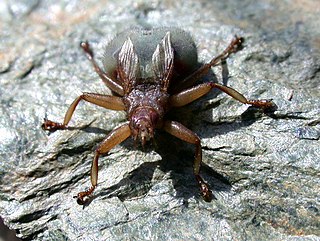
Crataerina is a genus of louse flies in the family Hippoboscidae. All are parasites of birds, feeding on the blood of various species of Apodidae (swifts) and Hirundinidae. The genus is sometimes spelled Craterina.

Pseudolynchia canariensis, the pigeon louse fly or pigeon fly, is a species of biting fly in the family of louse flies, Hippoboscidae.
Stilbometopa are genus of biting flies in the family of louse flies, Hippoboscidae. There are 5 known species. All species are parasites of birds.
Microlynchia is a genus of biting flies in the family of louse flies, Hippoboscidae. There are four known species. All species are parasites of birds. Microlynchia differs from Pseudolynchia in the presence of minute ocelli and a differently shaped scutellum.
Ortholfersia is a genus of biting flies in the family of louse flies, Hippoboscidae. There are 4 known species. All species are parasites of macropods.

Icosta are genus of biting flies in the family of louse flies, Hippoboscidae. There are 52 known species, making it the largest Hippoboscid genus. All species are parasites of birds.
Allobosca is a genus of biting flies in the family of louse flies, Hippoboscidae. There is only one known species, Allobosca crassipesSpeiser, 1899. It is a parasite of lemurs. It has only rudimentary wings.
Austrolfersia is a genus of biting flies in the family of louse flies, Hippoboscidae. There is only one known species, Austrolfersia ferrisiBequaert, 1953. It is a parasite of Diprotodontia.
Phthona is a genus of biting flies in the family of louse flies, Hippoboscidae. There are 3 known species. All are parasite of falconets of the genus Microhierax.
Ornithoica are genus of biting flies in the family of louse flies, Hippoboscidae. There are 23 known species. All species are parasites of birds.
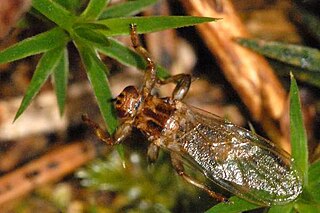
Ornithomya are genus of biting flies in the family of louse flies, Hippoboscidae. There are 29 known species. All species are parasites of birds.
Myophthiria is a genus of biting flies in the family of louse flies, Hippoboscidae. There are 13 known species. All species are Parasites of birds.
Ornithoctona are genus of biting flies in the family of louse flies, Hippoboscidae. There are 12 known species. All species are parasites of birds.
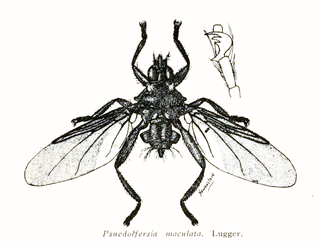
Olfersia is a genus of biting flies in the family of louse flies, Hippoboscidae. The genus was erected by William Elford Leach in 1817. There are seven known species, and all are parasites of birds.
Proparabosca is a genus of biting flies in the family of louse flies, Hippoboscidae. There is only one known species, Proparabosca alata(Theodor & Oldroyd, 1965). It is a parasite of lemurs.

Ornithomyinae is a subfamily of the fly family Hippoboscidae. All are blood feeding parasites, for the most part on birds, though some have mammals as hosts.

Cordyligaster is a genus of bristle flies in the family Tachinidae.

Dexiini is a tribe of flies in the family Tachinidae.
